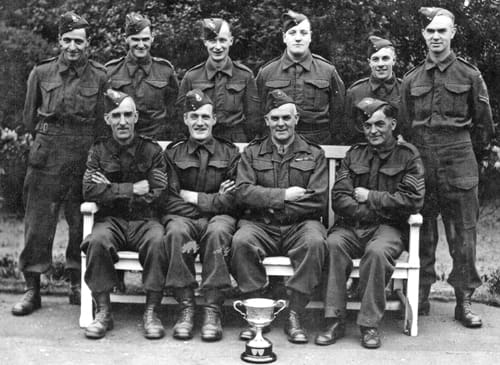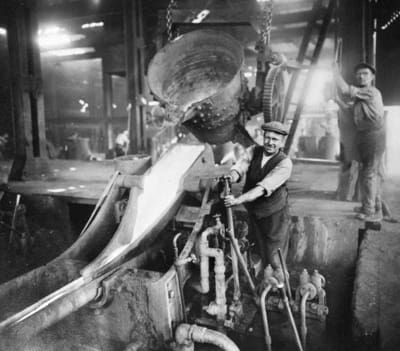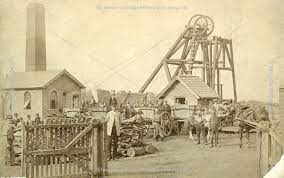Stanton Gate Bomb Plant
Within months of the outbreak of war with Nazi Germany in 1939 it became apparent to the British Government’s Ministry of Supply, that the available steel plants and foundries already in existence would be unable to meet the huge demand for bombs required by the combined air forces of the country. Therefore approaches were made to a number of manufacturers, Stanton Iron Works included, with regard to the establishment of entirely new foundries, whose sole purpose would be the mass production of 500 lb steel bomb cases.
Financed by the Ministry of Supply at a cost of just under one and a half million pounds, The Stanton Iron Works Company, along with U.S. steel production experts H.A. Brassert, turned 25 acres of open farm land at Stanton Gate, situated at the borders of Stanton by Dale, Stapleford and Sandiacre, into the most modern production unit of its kind, an undertaking which took just eleven months to complete from the arrival on site in October 1940 to the first bomb cases rolling off the production line in September 1941.
Stanton’s engineers undertook the design of the foundry and its associated production units, while Brasserts took on responsibility for overseeing the steel production process. Interestingly it was Brasserts who just three years earlier had also been involved with the modernisation at the Hermann Göring Steel Works in Germany! Also the speed at which the plant came into production may suggest that contingency plans for such plants were already in place before the actual outbreak of war.
The Stanton Gate Foundry was designed with the capacity to produce up to 100 bombs cases per hour, however, the plant did not reach its full potential until at least three months after production began, due mainly to the fact that the intention to use 100% steel scrap in the process was completely new and innovative. Mistakes were made and glitches had to be ironed out but it was not long before production targets were met and even exceeded on many occasions.
Let us also bear in mind, that of the hundreds of staff employed at the plant when it went into production in September 1941, very few if any had any real experience in steel production and of this work force, around 40% were women, drawn from local homes, factories, offices and shops, none of whom had ever set foot in a foundry before, demonstrating how it was even more remarkable that the plant was built and in production within a such a short time.
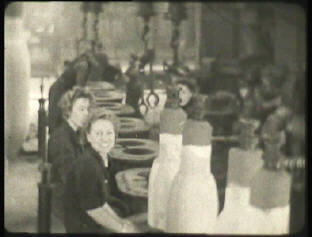
Girls working at the core making station find time to
smile at the camera
However, production soon reached full capacity, though only working a one shift of twelve hours per day system. Only after the D-Day landings in 1944, did the foundry increase its output, moving to a two shift system, which included the production of smaller 250 lb bombs allowing the workers at the foundry to produce over 870,000 bombs cases over the four years, over 80% of which were dispatched to allied air forces.
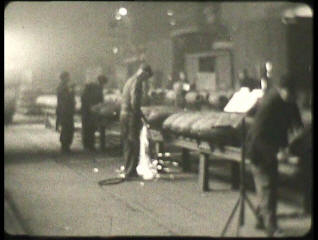
The fettling bay where the rough edges on the bomb
castings were ground off
After the war the plant was closed while the staff being employees of the Ministry of Supply as opposed to Stanton Iron Works were dismissed, the women returning to their homes, shops and factories, the men – many being former Stanton workers – returned to the blast furnaces and foundries.
After standing idle for a few years the former bomb plant was purchased by Stanton and reopened as the Erewash Foundry producing tunnel segments and other specialist castings.
The plant finally closed down in the 1980s and was completely demolished in the early 1990s, many of the buildings still bearing the yellow, green and black camouflage paint applied fifty years before.
Image below – Stanton’s own Home Guard, around 1942.
Stanton’s engineers undertook the design of the foundry and its associated production units, while Brasserts took on responsibility for overseeing the steel production process. Interestingly it was Brasserts who just three years earlier had also been involved with the modernisation at the Hermann Göring Steel Works in Germany! Also the speed at which the plant came into production may suggest that contingency plans for such plants were already in place before the actual outbreak of war.
The Stanton Gate Foundry was designed with the capacity to produce up to 100 bombs cases per hour, however, the plant did not reach its full potential until at least three months after production began, due mainly to the fact that the intention to use 100% steel scrap in the process was completely new and innovative. Mistakes were made and glitches had to be ironed out but it was not long before production targets were met and even exceeded on many occasions.
Let us also bear in mind, that of the hundreds of staff employed at the plant when it went into production in September 1941, very few if any had any real experience in steel production and of this work force, around 40% were women, drawn from local homes, factories, offices and shops, none of whom had ever set foot in a foundry before, demonstrating how it was even more remarkable that the plant was built and in production within a such a short time.

Girls working at the core making station find time to
smile at the camera
However, production soon reached full capacity, though only working a one shift of twelve hours per day system. Only after the D-Day landings in 1944, did the foundry increase its output, moving to a two shift system, which included the production of smaller 250 lb bombs allowing the workers at the foundry to produce over 870,000 bombs cases over the four years, over 80% of which were dispatched to allied air forces.

The fettling bay where the rough edges on the bomb
castings were ground off
After the war the plant was closed while the staff being employees of the Ministry of Supply as opposed to Stanton Iron Works were dismissed, the women returning to their homes, shops and factories, the men – many being former Stanton workers – returned to the blast furnaces and foundries.
After standing idle for a few years the former bomb plant was purchased by Stanton and reopened as the Erewash Foundry producing tunnel segments and other specialist castings.
The plant finally closed down in the 1980s and was completely demolished in the early 1990s, many of the buildings still bearing the yellow, green and black camouflage paint applied fifty years before.
Image below – Stanton’s own Home Guard, around 1942.
[/et_pb_text][/et_pb_column][/et_pb_row][/et_pb_section]
